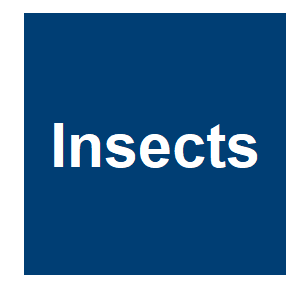Population Dynamics of Aedes aegypti and Aedes albopictus in Two Rural Villages in Southern Mexico: Baseline Data for an Evaluation of the Sterile Insect Technique

|
C. F. Marina, J. G. Bond, K. Hernández-Arriaga, J. Valle, A. Ulloa, I. Fernández-Salas, D. O. Carvalho, K. Bourtzis, A. Dor, T. Williams and P. Liedo,
Insects,
12.
2021.

Indoor and outdoor ovitraps were placed in 15 randomly selected houses in two rural villages in Chiapas, southern Mexico. In addition, ovitraps were placed in five transects surrounding each village, with three traps per transect, one at the edge, one at 50 m, and another at 100 m from the edge of the village. All traps were inspected weekly. A transect with eight traps along a road between the two villages was also included. Population fluctuations of Aedes aegypti and Ae. albopictus were examined during 2016–2018 by counting egg numbers. A higher number of Aedes spp. eggs was recorded at Hidalgo village with 257,712 eggs (60.9%), of which 58.1% were present in outdoor ovitraps and 41.9% in indoor ovitraps, compared with 165,623 eggs (39.1%) collected in the village of Río Florido, 49.0% in outdoor and 51.0% in indoor ovitraps. A total of 84,047 eggs was collected from ovitraps placed along transects around Río Florido, compared to 67,542 eggs recorded from transects around Hidalgo. Fluctuations in egg counts were associated with annual variation in precipitation, with 2.3 to 3.2-fold more eggs collected from ovitraps placed in houses and 4.8 to 5.1-fold more eggs in ovitraps from the surrounding transects during the rainy season than in the dry season, respectively. Aedes aegypti was the dominant species during the dry season and at the start of the rainy season in both villages. Aedes albopictus populations were lower for most of the dry season, but increased during the rainy season and predominated at the end of the rainy season in both villages. Aedes albopictus was also the dominant species in the zones surrounding both villages. The numbers of eggs collected from intradomiciliary ovitraps were strongly correlated with the numbers of eggs in peridomiciliary ovitraps in both Río Florido (R2adj = 0.92) and Hidalgo (R2adj = 0.94), suggesting that peridomiciliary sampling could provide an accurate estimate of intradomiciliary oviposition by Aedes spp. in future studies in these villages. We conclude that the feasibility of sterile insect technique (SIT)-based program of vector control could be evaluated in the isolated Ae. aegypti populations in the rural villages of our baseline study. More related to this: Village hears from experts as genetic-mosquito release experiment nears. Burkina Faso Testing Genetically Modified Mosquitoes to Curb Malaria Nation’s First Trial Of Genetically Modified Mosquitoes Starts In Florida Keys Reengineered mosquitoes released in Florida pilot program
|



